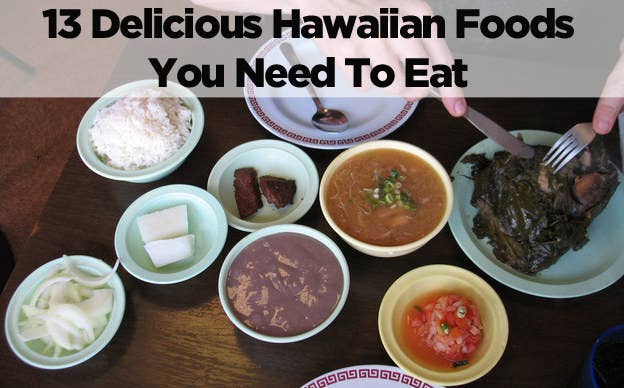
When early Polynesians arrived in Hawaii between 200 to 500 A.D., they brought along some plants and animals to eat, and also relied on the abundance of fish in the ocean around them.
But after British Captain James Cook arrived in the islands in 1778, bringing contact with the Western world, Hawaii's food culture began to change drastically. Whalers and merchants arrived with salted fish, followed by laborers from around the world brought in to work on plantations. Those workers brought techniques and dishes from China, Japan, Korea, Portugal, the Philippines, and other places, and their cultures' cuisines mixed with ancient Hawaiian food to create what would become the Hawaiian plate.
1. Poi
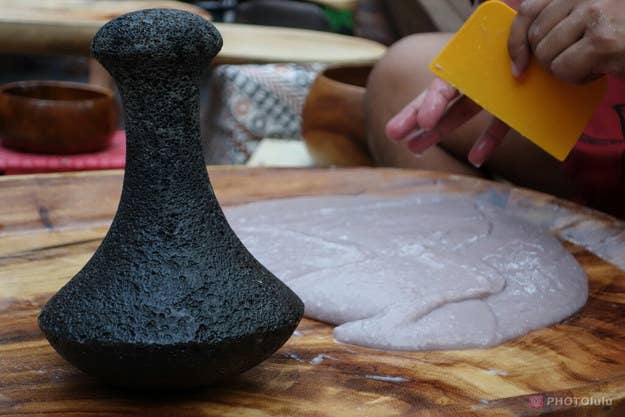

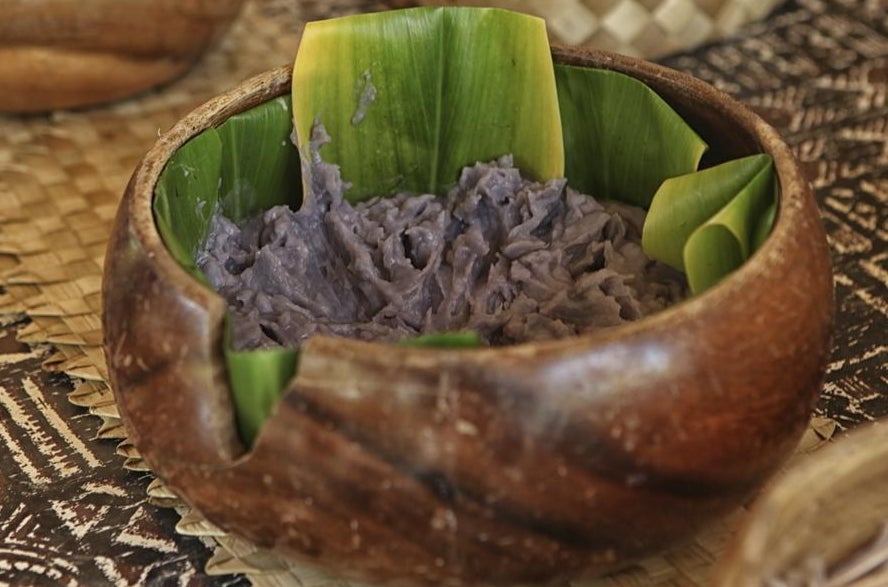
What it is: Poi is a sticky paste made by mashing taro (kalo) root, and tastes delicious mixed with almost any item on the Hawaiian plate. Taro is the low-calorie staple that ancient Hawaiians ate with most meals; it was considered the life force. Taro probably arrived in Hawaii between 200 to 500 A.D. along with the earliest Polynesians that came to the islands. At one time, Hawaiians cultivated more than 300 varieties.
How it's made: By mashing the root of taro with a poi pounder while adding water until it's the right amount of mushy and gooey. Many say poi tastes best a few days old, with fermentation giving it a slightly sour taste. If you don't have time to hand-pound your poi, you can also make it in a mixer.
2. Lomi Salmon
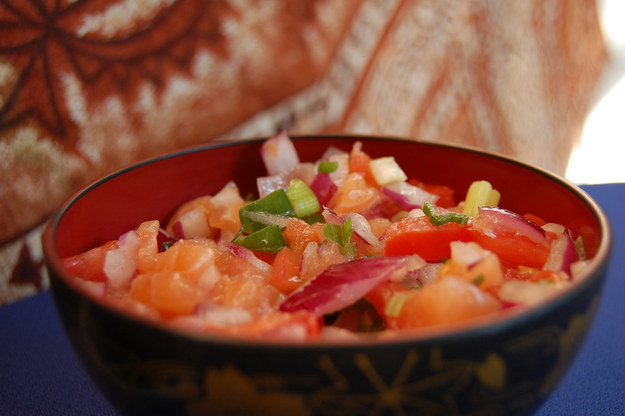
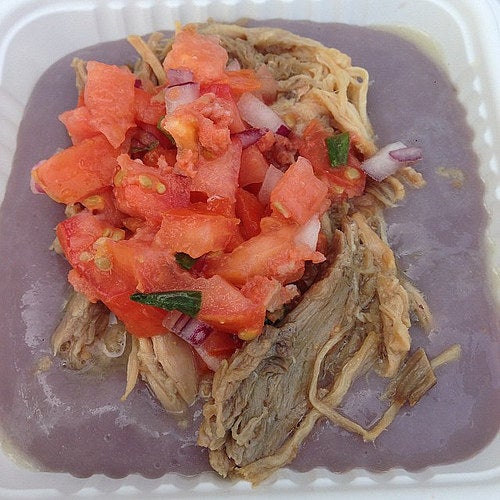
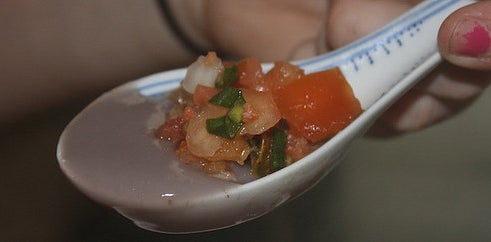
What it is: This dish is made with cured raw salmon that's diced and mixed with tomatoes, onions, and occasionally hot peppers. Lomi salmon is made entirely of post-contact ingredients: In the late 1700s, whalers and merchants arrived in the islands, bringing with them salted fish, and in 1791 Don Francisco de Paula Marin, an influential Spaniard, came to Hawaii, bringing tomatoes and onions.
How it's made: Lomi in Hawaiian means "to massage," and the name is taken from how the dish is prepared — the ingredients are massaged together with the salted fish. It is always served cold and often mixed with poi when eaten. Get a recipe here.
3. Lau Lau
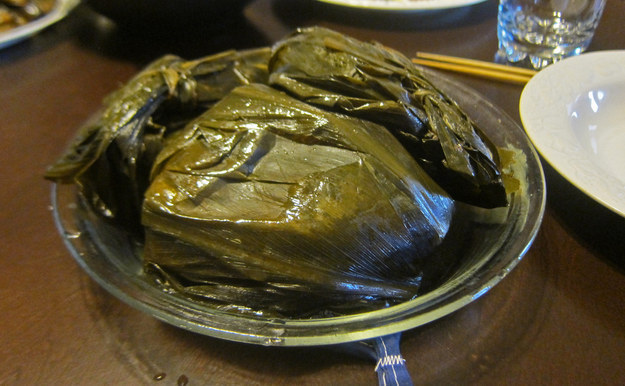
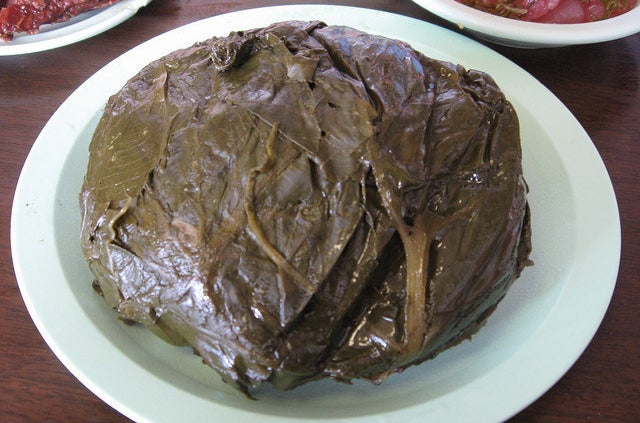
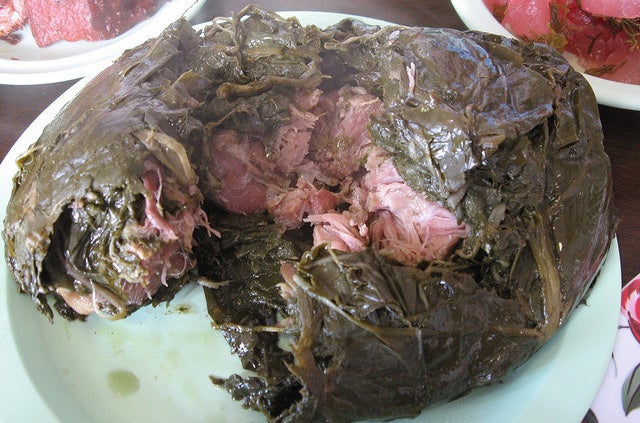
What it is: In Hawaiian, lau lau means "leaf leaf," because it is made with layers of ti leaves and taro leaves wrapped around pig and fish. It's slow-cooked in an underground rock oven (imu) for many hours until it is soft and smoky. The taro leaves become very tender and are edible, while the long ti leaves are used to retain the flavor and are inedible. Ancient Hawaiians used ti leaves to wrap and store or cook many different types of foods. The ancient Polynesians who came on canoes to Hawaii brought pigs (puaa) and ti leaves as well as this cooking technique with them. Western contact has created new versions of this dish with other meats inside, such as beef, and other cooking techniques.
How it's made: In an imu. A modern version can also be made in a crock pot.
4. Purple Sweet Potato
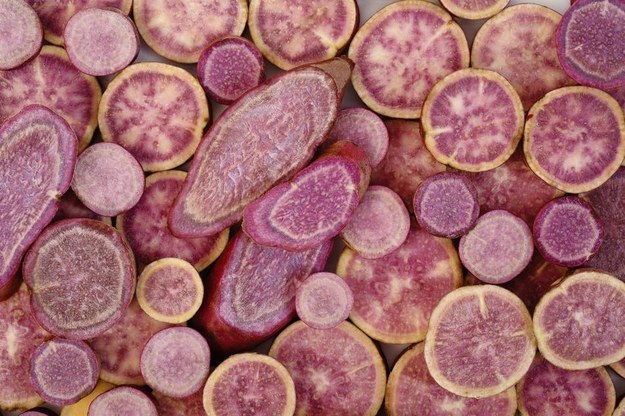


What it is: Sweet potato (uala) were brought to Hawaii on canoes with the earliest Polynesians who came to the islands. Ancient Hawaiians grew over 200 varieties of uala, but only a few varieties are still cultivated today. Each has its own taste, but they tend to have a soft texture and floral flavor. The leaves of the plant are also edible.
How it's made: Sweet potatoes can be grilled, steamed, or baked in an oven or in an imu. Cooked, skinned, and mashed uala makes a sweet potato poi when mixed with water.
5. Kalua Pig
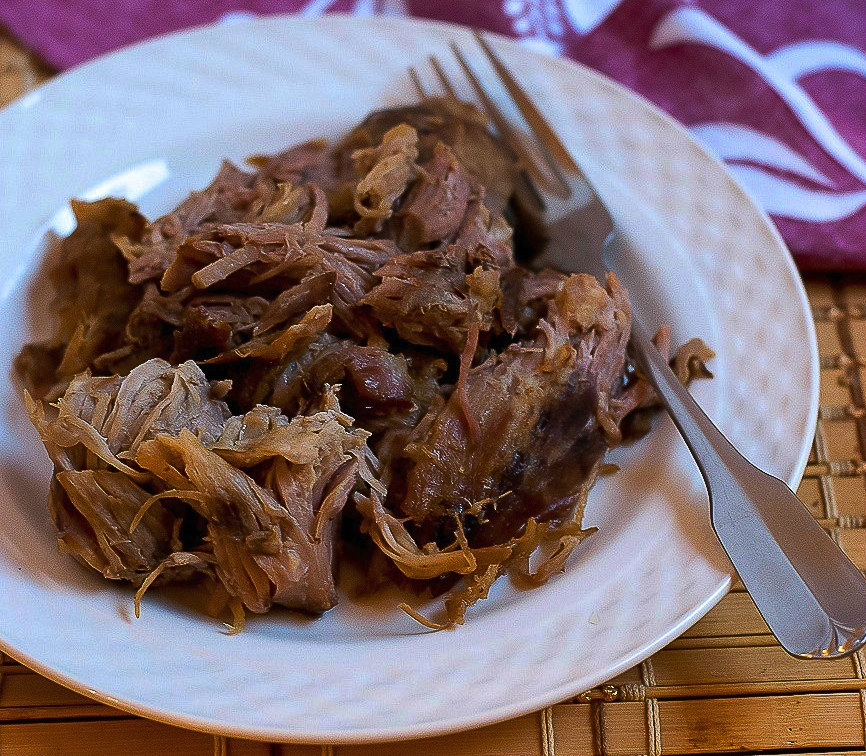


What it is: Kalua means "to bake in the ground oven," which gives the pig its signature smoky taste. The kalua pig is traditionally wrapped in ti leaves, which are inedible, but help the meat retain its flavor.
How it's made: This dish is cooked over many hours in an imu, which makes it extremely juicy and tender. You can find more details about how to make kalua pig here. A modern version can also be made in a slow cooker.
6. White Rice
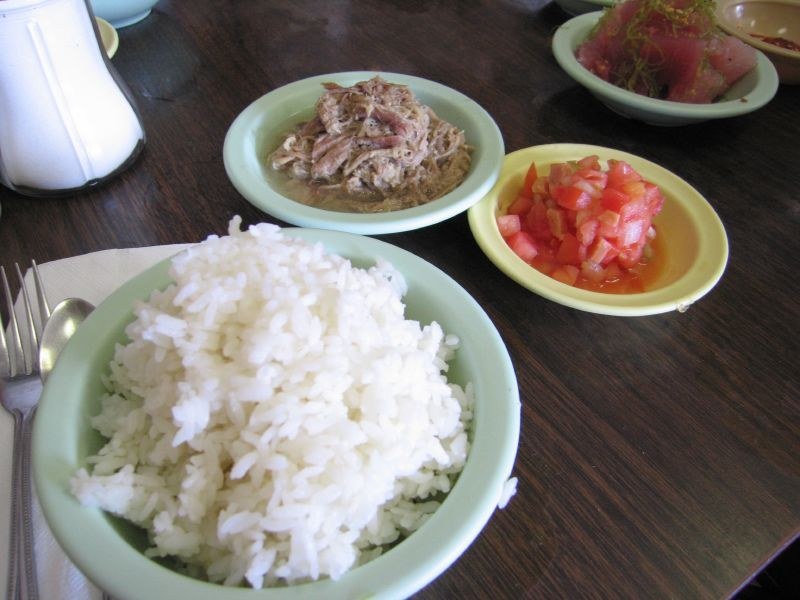
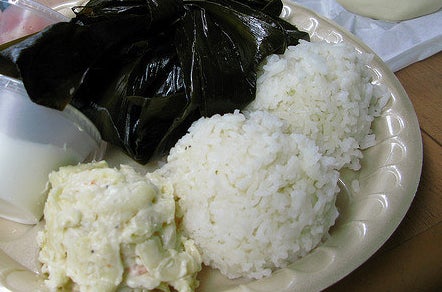

What it is: Two scoops of white rice are an essential part of the Hawaiian plate. Short-grain sticky rice serves as a great base and mixes well with everything. Asian plantation laborers who came to Hawaii in the 1800s brought rice and the knowledge of how to grow it, and people in Hawaii have loved it ever since.
How it's made: Usually in a rice cooker.
7. Squid Luau
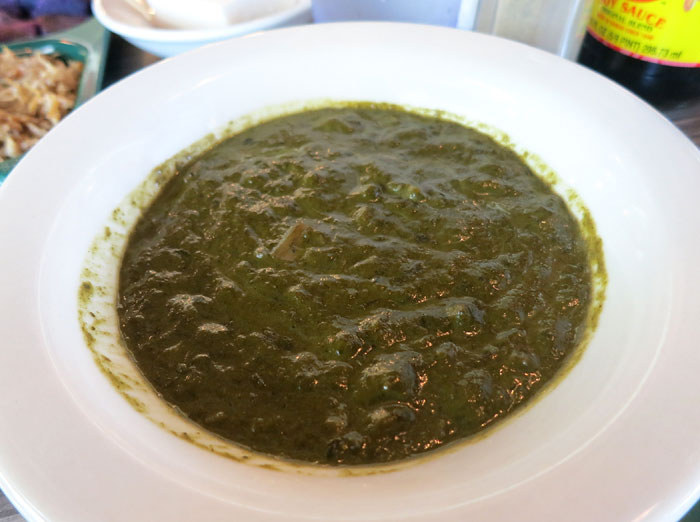
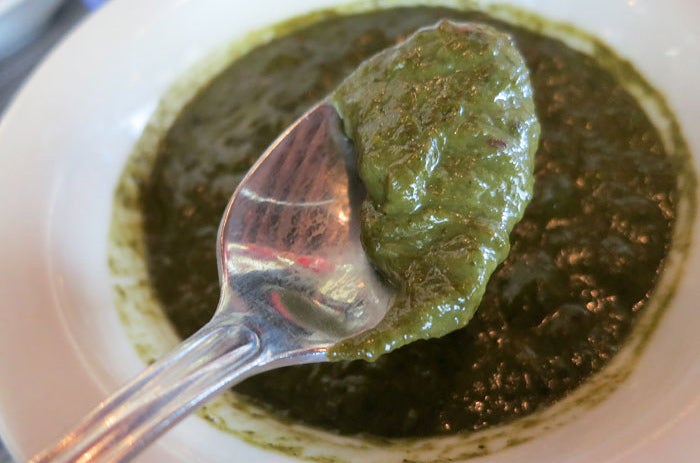

What it is: Octopus cooked in luau (taro leaves) and coconut milk, which gives it a savory-sweet taste.
How it's made: This dish is made by cooking octopus and luau in coconut milk until the leaves are extremely tender. Now it's sometimes made with chicken or squid. Find a recipe here.
8. Chicken Longrice
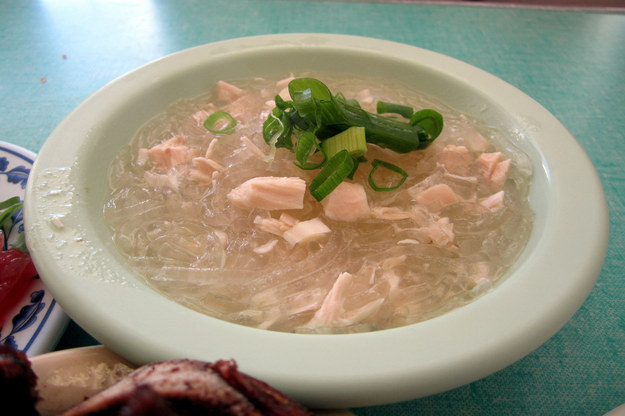
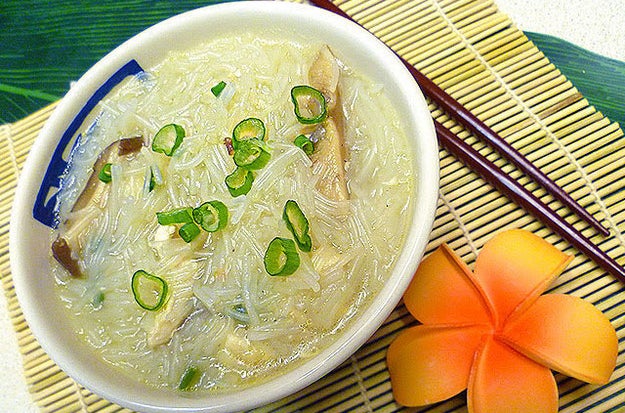

What it is: This soup is a combination of chicken and clear mung bean noodles (called "longrice"), cooked in a gingery chicken broth. Early Polynesians brought chickens (moa) to Hawaii with them; in the mid-to-late 1800s, Chinese contract laborers arrived with the noodles and knowledge to make those chickens into delicious soup.
How it's made: With lots and lots of ginger. Watch it being made and get a recipe here.
9. Poke
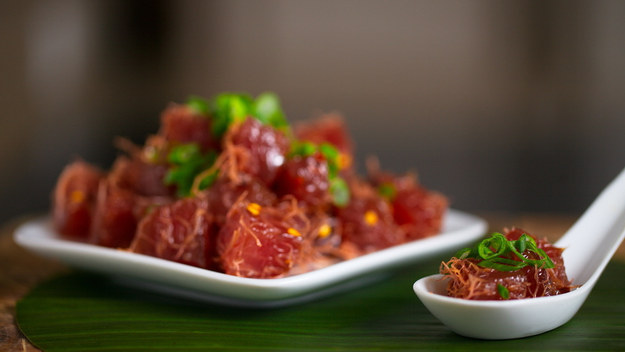

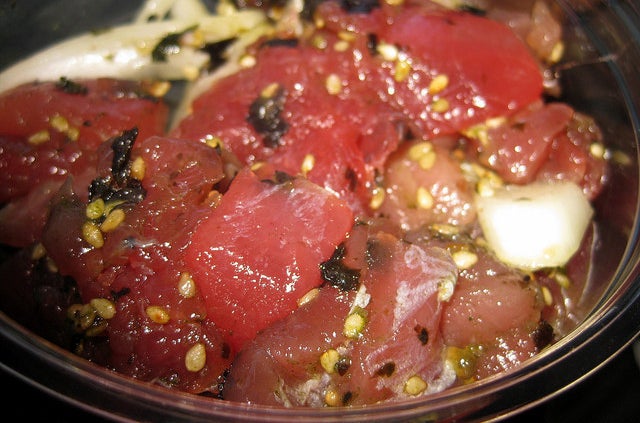
What it is: Poke is made of raw fish, usually ahi (tuna), but sometimes other saltwater fish or octopus. It gets cut up into bite-size chunks and flavored with some combination of salt, green and white onions, garlic, chili pepper, soy sauce, and sesame oil.
How it's made: Get a recipe here.
10. Breadfruit

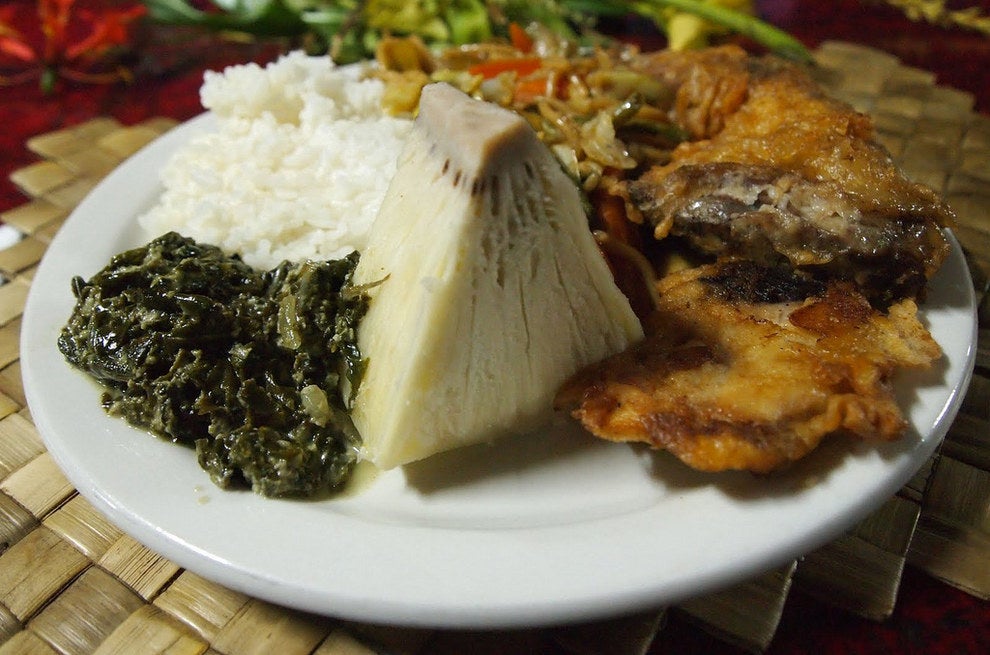
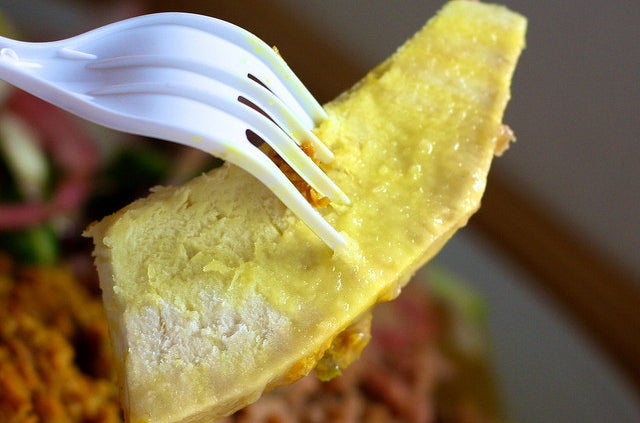
What it is: Breadfruit (ulu) grows on big trees that may attain heights of 40 to 60 feet. The fruit itself is a large green ball that's rough on the surface and weighs up to 10 pounds. The ripe fruit is pale yellow. It has a starchy texture, similar to a potato, and tastes subtly sweet. Early Hawaiians brought breadfruit to the island on canoes between 200 to 500 A.D. It is common throughout Asia and the South Pacific.
How it's made: There are many ways to prepare breadfruit. It may be steamed, baked, boiled, marinated, stir-fried, or deep-fried. It can also be mashed into an ulu poi. Although it is usually cooked before eating, some people eat it raw.
11. Pipi Kaula
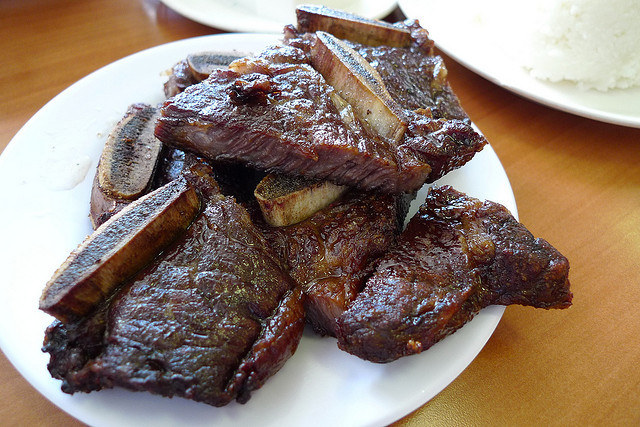
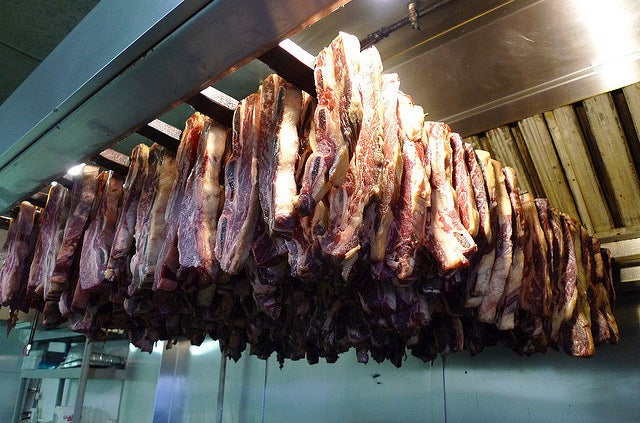
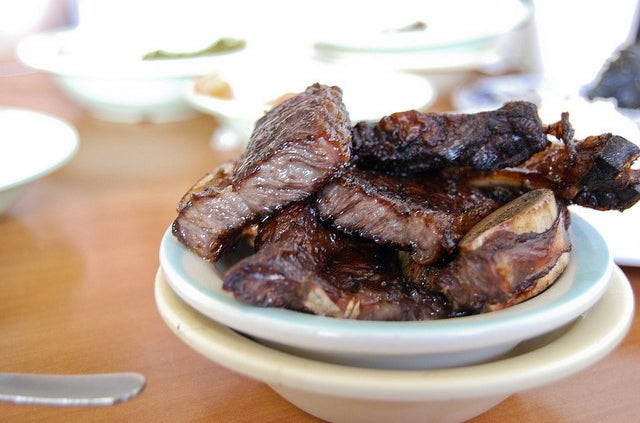
What it is: This is basically Hawaiian-style beef jerky. Meat is dried outside until it has a chewy texture. Then the pipi kaula is fried or char-broiled before eating with poi or rice. Cattle were brought to Hawaii in 1792 by Capt. George Vancouver. Eventually, Mexican cowboys (paniolo) were brought to Hawaii to control expanding wild cattle populations, and pipi kaula emerged from that paniolo culture.
How it's made: Nowadays, pipi kaula is prepared in many different ways, with various beef cuts and different condiments, including honey, garlic powder, sherry, sesame seeds, and kim-chee. Drying methods also include oven-drying as well as hanging by stainless steel hooks high over a stove. Get recipes here.
12. Haupia
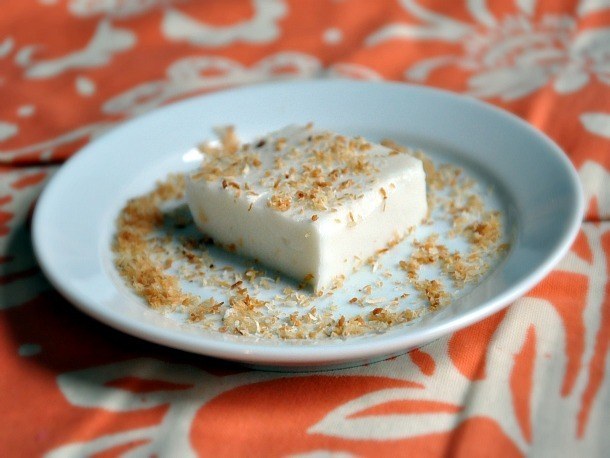
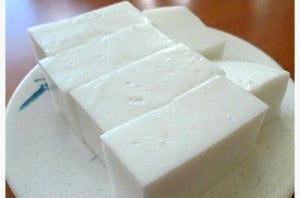
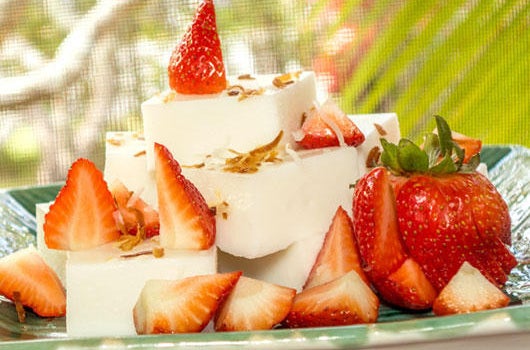
What it is: Haupia is a coconut pudding-like dessert, which is usually cut into squares when it's served. It has a sweet coconut flavor and (when made just right) the smoothest texture. Ancient Polynesians brought coconut (niu) with them when they arrived in Hawaii, but many independently floated over to the islands before.
How it's made: Traditional haupia was made with niu cream mixed with pia (Polynesian arrowroot), then wrapped in ti leaves and baked in the imu. Now haupia is usually made by boiling coconut milk with sugar for sweetness. Just a little sugar is needed, since the coconut is naturally sweet. Whisking in cornstarch thickens the dessert. When the pudding is finished, it cools in the fridge for several hours to solidify. Get a recipe here.
13. Kulolo
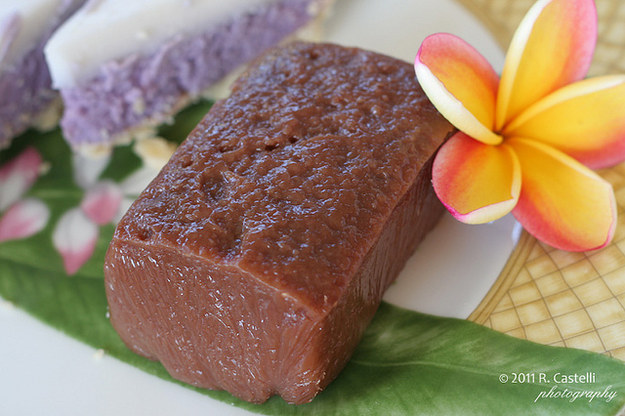
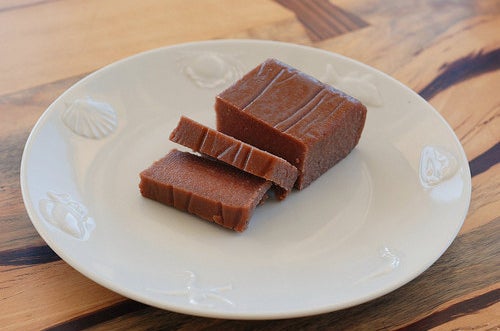

What it is: This dessert is similar to haupia, but is made with grated taro, which gives it a nutty sweetness. It also has a thicker, more mealy texture, when compared with the smoothness of haupia. The version of kulolo eaten now is a post-contact invention, but ancient Hawaiians mixed the flesh of a mature coconut with taro to make the original dish. Hawaiians also mixed coconut cream with sweet potato to make poipalau, or with very ripe breadfruit to make paipaiee. These delicious desserts were all wrapped in ti leaves and baked in an imu.
How it's made: The modern version of this dish is made with coconut milk, taro, sugar, and sometimes honey, baked in a covered pan for several hours. Recipe here.
